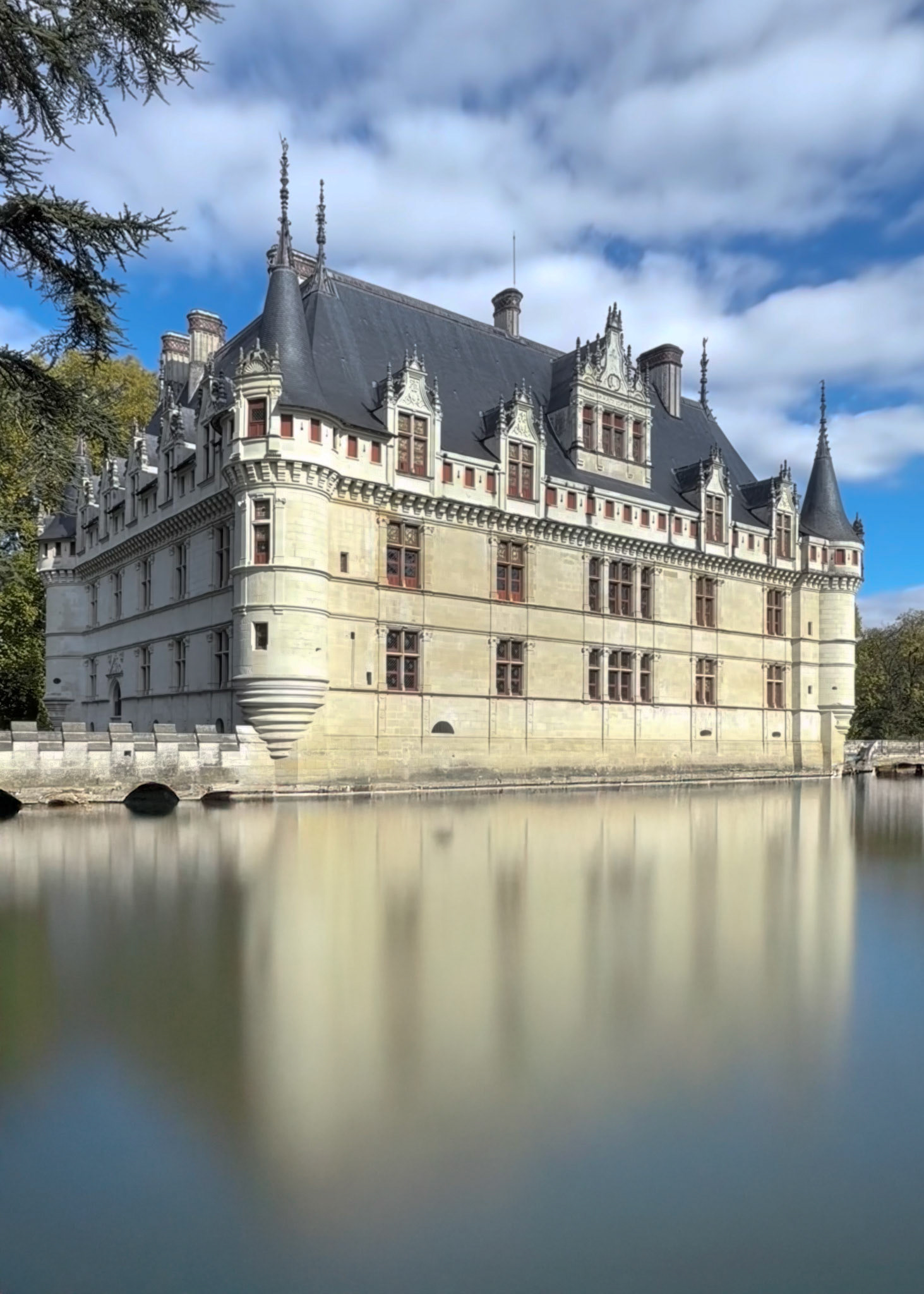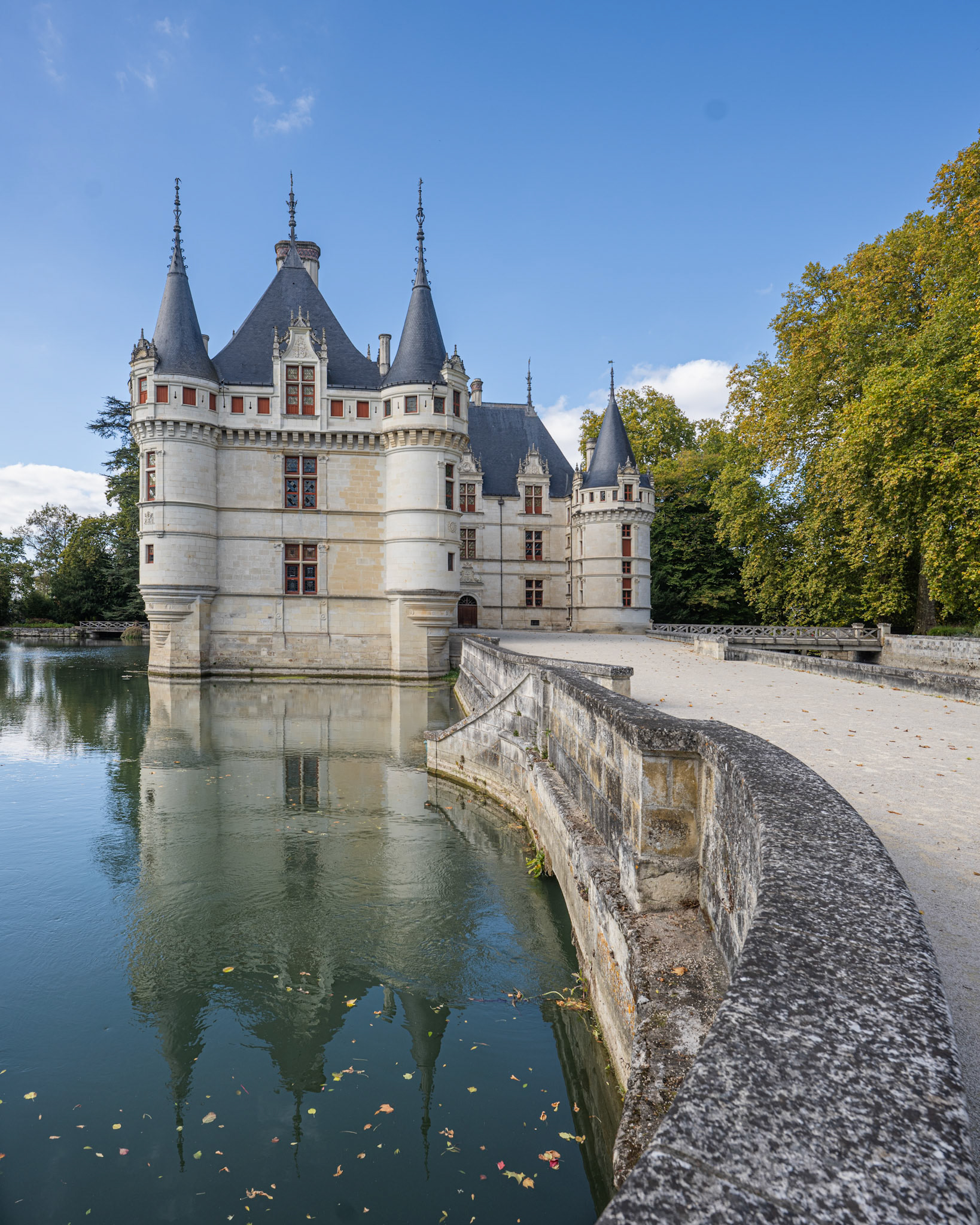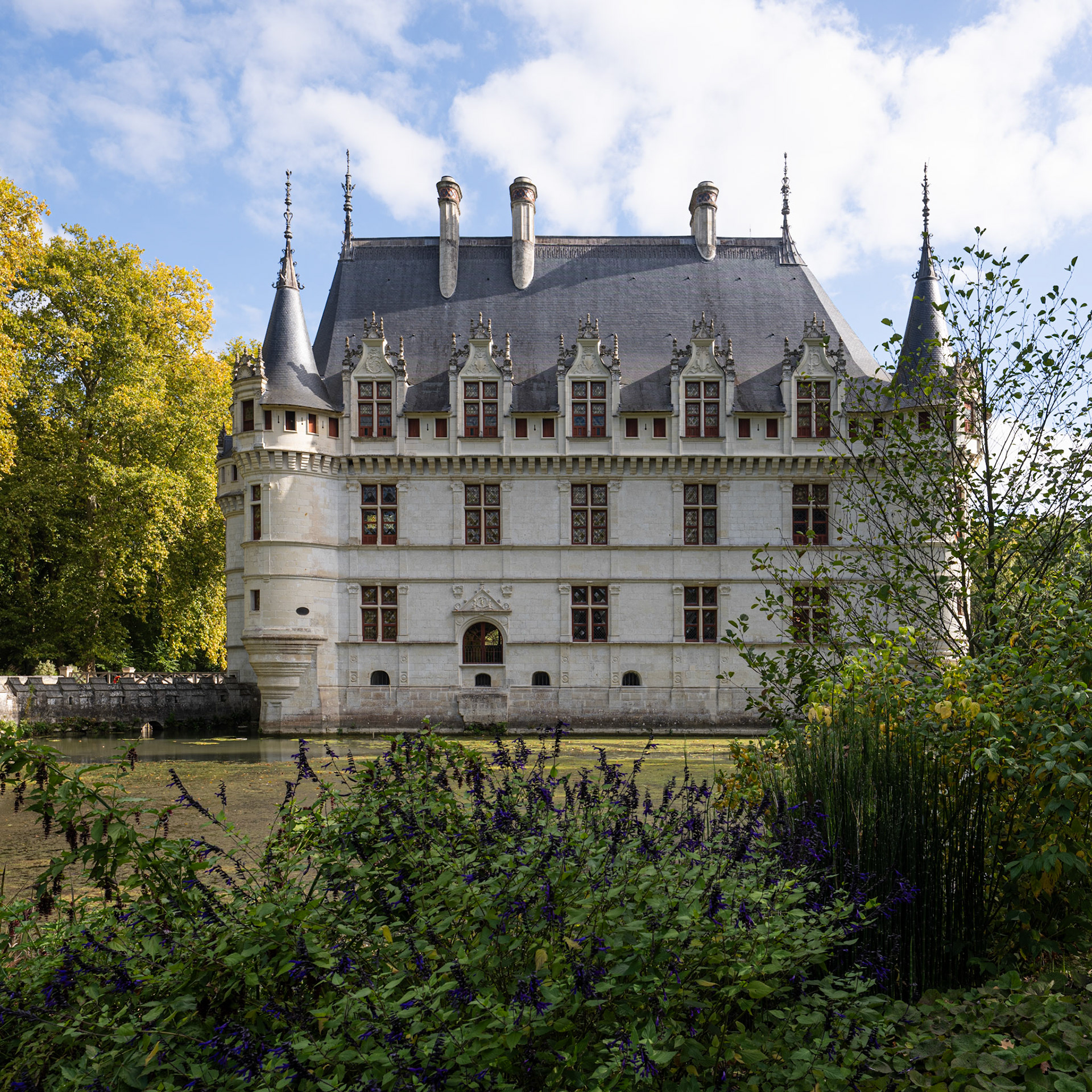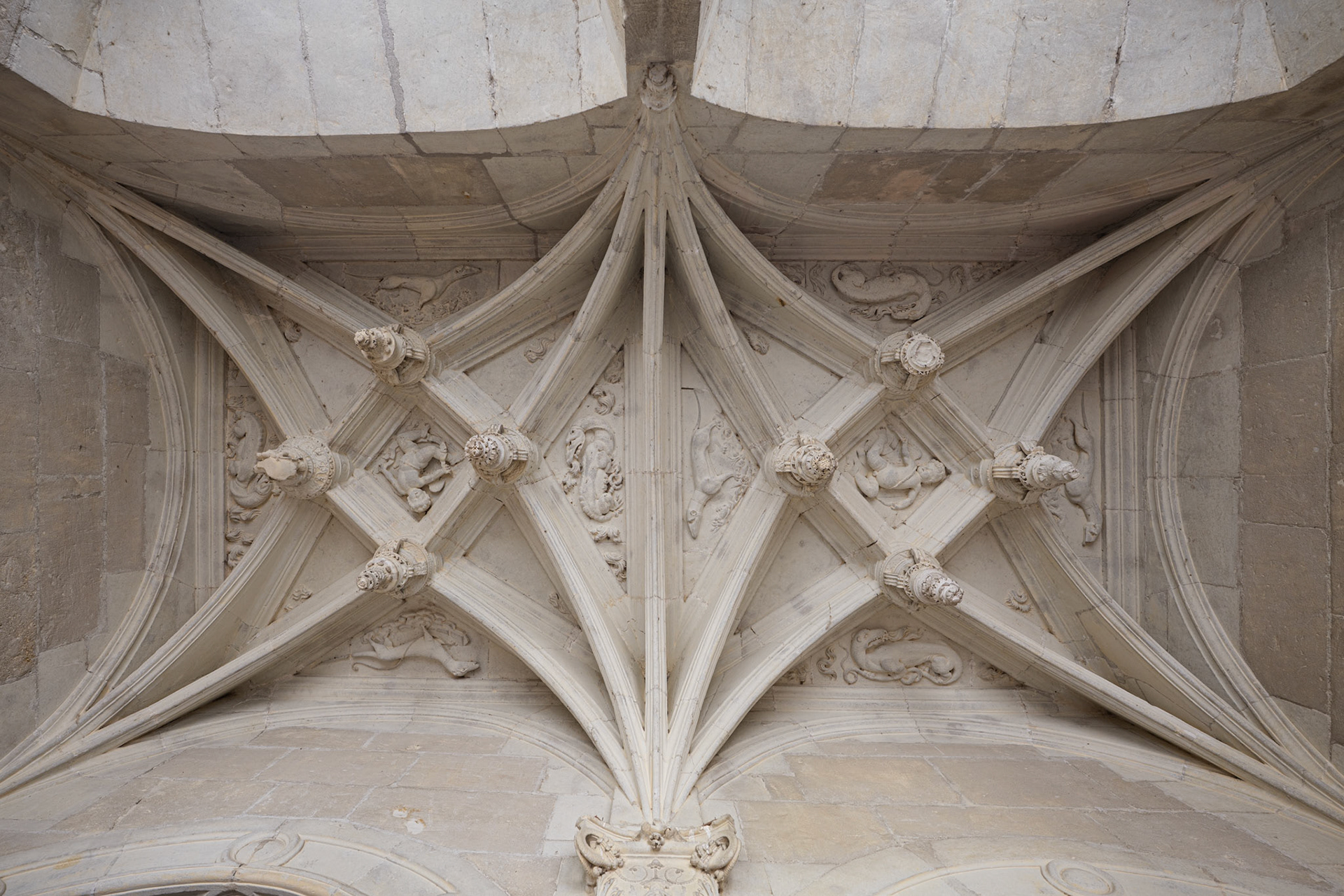The Château d’Azay-le-Rideau was built between 1518 and 1527 for Gilles Berthelot, a high-ranking financier under François Ier in an early French Renaissance style. Constructed on an island in the Indre River, the château is characterized by its harmonious proportions, sculpted façades, and steep slate roofs reflected in the surrounding water. After several periods of neglect, the château was restored in the late 19th century and is now preserved by the French state as a key monument of Renaissance architecture in the Loire Valley.

Azay-le-Rideau

Azay-le-Rideau
The château is surrounded by a landscaped park created in the 19th century, when the property was redesigned in the style of an English Romantic garden. Developed between 1850 and 1860 under the ownership of the Biencourt family, the park was shaped to enhance the château’s reflections in the Indre. Winding paths, carefully composed viewpoints, and a varied collection of trees—including plane trees, cedars, and redwoods—frame the building and accentuate its island setting.

Azay-le-Rideau
Built in the 1520s, the honor staircase replaces the traditional medieval spiral staircase with a straight-flight staircase rising through a tall, well-lit tower. Its interior is lined with large windows that illuminate the sculpted decoration, including medallions, pilasters, and motifs inspired by Italian Renaissance models.

honor staircase - ceiling

honor staircase

honor staircase - ceiling
The Renaissance Room, originally the chamber of Philippe Lesbahy, is a reconstruction of refined 16th-century interiors. Its centrepiece is the richly adorned bed, draped in silk fabrics embroidered with gold and silver threads. The re-creation of the room followed historically documented Renaissance practices, including the revival of the traditional rush-matting technique used to cover the walls for insulation.
Psyche’s Chamber takes its name from the remarkable set of silk-and-wool tapestries that line its walls. These richly woven pieces illustrate the story of Psyche in a sequence of finely detailed scenes.

Renaissance Room

Psyche's Chamber
The antechamber recalls the château’s role as a place of high-ranking hospitality, notably in 1619 when the young Louis XIII stayed at Azay-le-Rideau for several days. Along its walls hangs a portrait gallery of French kings from the 15th to the 17th century; facing the fireplace are full-length likenesses of Louis XIV, Louis XIII, and Henri IV.

antechamber

antechamber with portraits of Louis XIV, Louis XIII, and Henri IV
While the first floor served as the noble level in the 16th and 17th centuries, the 19th century brought a new way of inhabiting the château. The Marquis de Biencourt transformed the ground floor into reception rooms and comfortable living spaces.

spiral staircase

spiral staircase
Part of the neo-Renaissance décor of the Biencourt Salon has been preserved, including the imposing fireplace, wood panelling, leather-patterned wallpaper, and a painted beam ceiling. Between 2015 and 2017, an extensive restoration was carried out in partnership with the Mobilier National to recreate the salon’s original ambience using detailed 19th-century inventories, photographs, and furnishings records.

Biencourt Salon

billiard room

dining room
You may also like